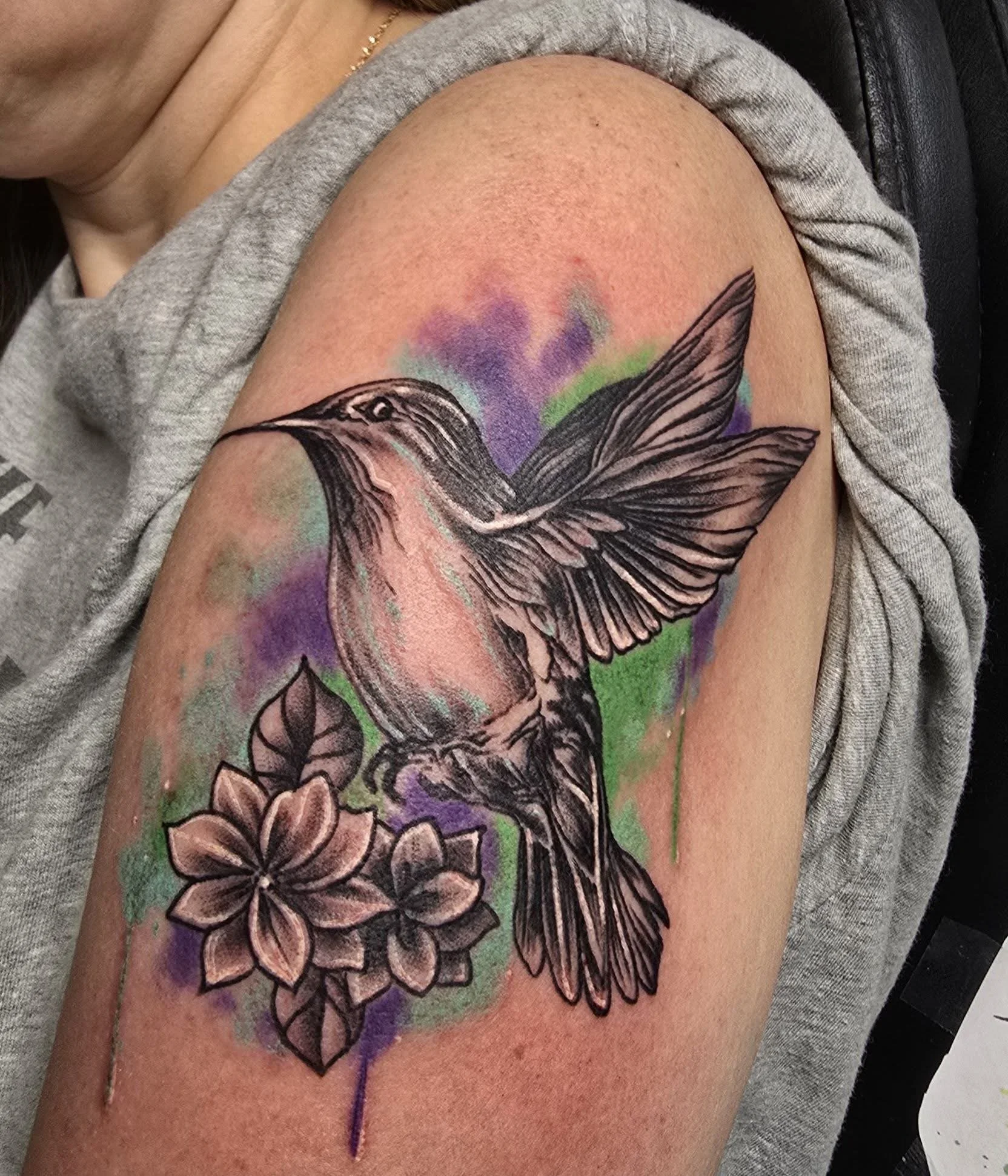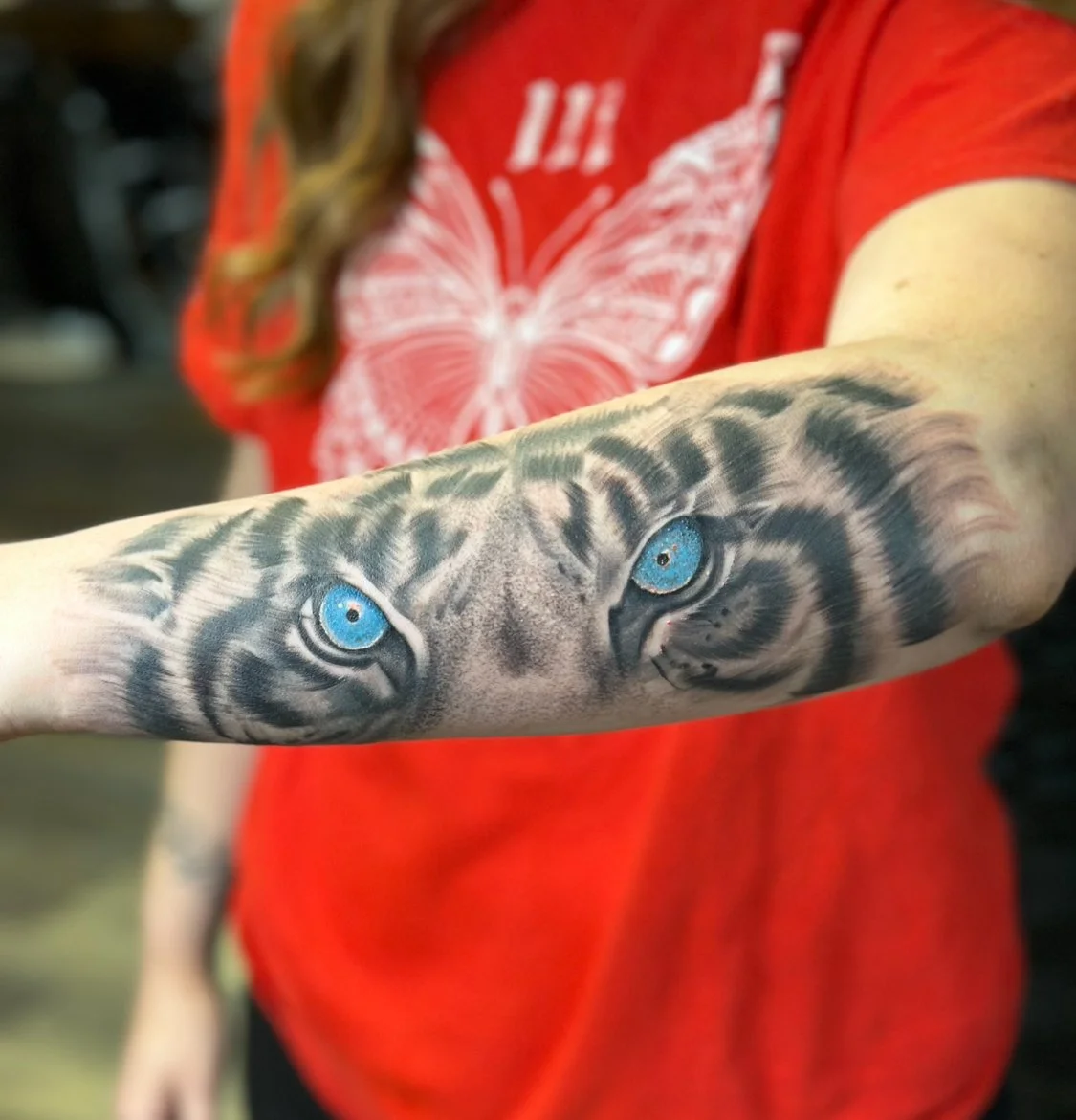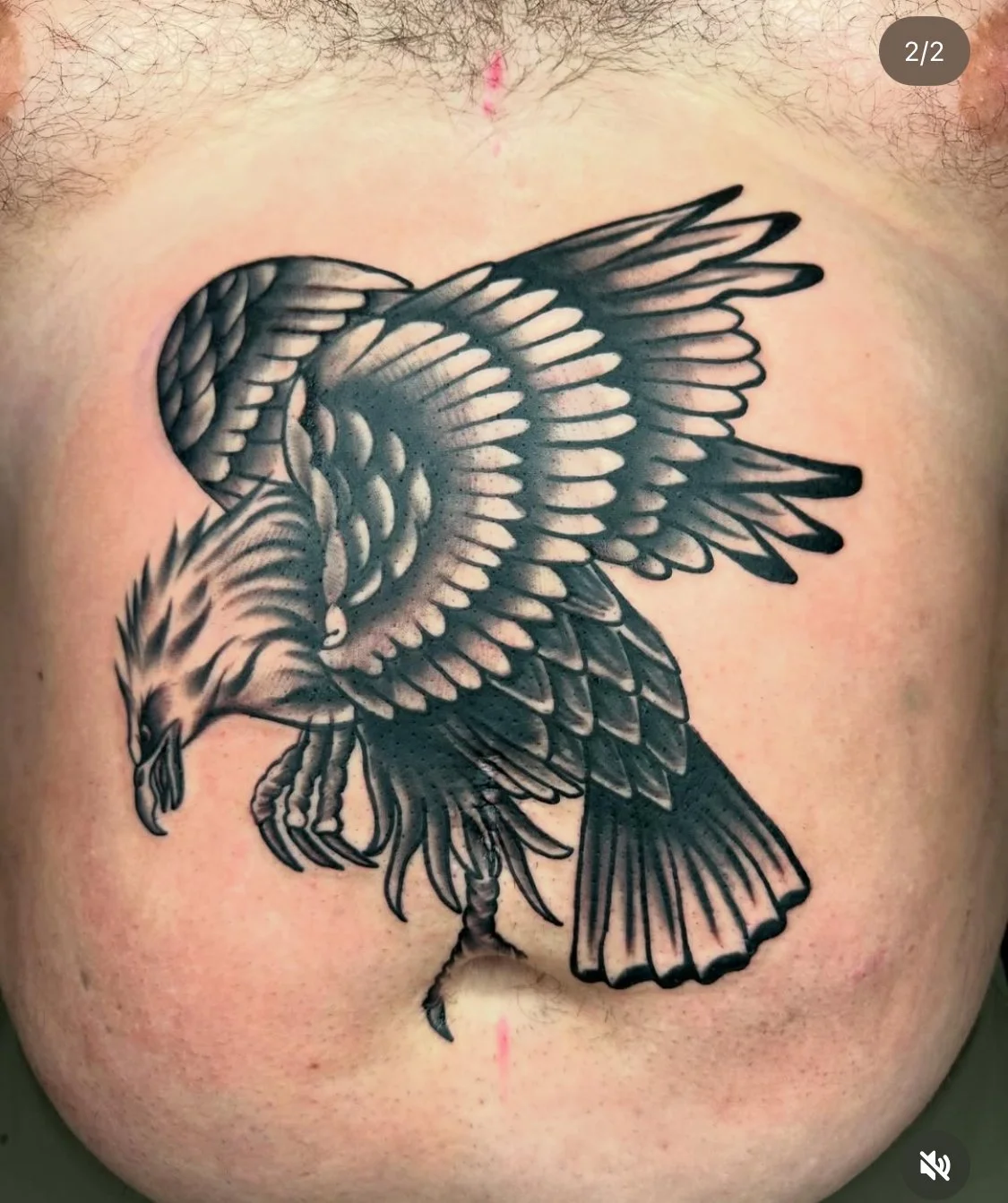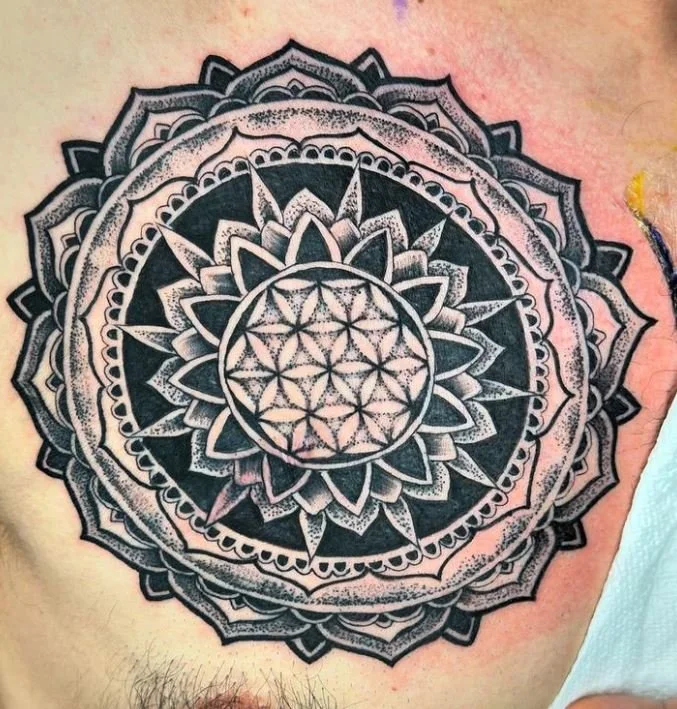Different Tattoo Styles Explained: Find Your Perfect Ink
You’d think with all the different tattoo styles out there, more people would get it right the first time. But the truth is a ton of folks are walking around with someone else’s personality inked onto them. Not art — identity theft in slow motion.
The style you choose matters. Not just aesthetically — but emotionally, psychologically, even socially. And most regrets quietly trace back to choosing a design that looked good on Instagram, but didn’t feel right once it healed.
Let’s be clear: you don’t need another blog telling you what a traditional tattoo is. You need someone to show you what kind of ink speaks your language before it’s committed to skin.
We’re not here to babysit trends. We’re here to hand you the scalpel — so you can cut through the noise and find the style that already lives inside you.
Classic and Timeless Tattoo Styles
Some styles don’t need rebrands. They’ve been here since ink met skin — and unlike fast fashion or flash trends, these tattoos age with confidence, not apology.
Traditional Tattoos – Proof That Loud Can Be Loyal
Let’s get one thing straight: traditional tattoos aren’t “retro.” They’re stubbornly immortal. These bold-line, big-attitude designs — think anchors, skulls, roses, eagles — weren’t designed for Instagram. They were built to hold up in shipwrecks, saloons, and actual wars. And they did.
That thick black outline? It wasn’t a stylistic whim. It was engineered to punch through bad ink and worse lighting. That limited color palette? Chosen for survival, not subtlety. Red, green, yellow, and black — they last longer than most relationships.
And yet, somehow, Gen Z has adopted the aesthetic without flinching — because confidence never really goes out of date. If you want an unapologetic, zero-subtext tattoo, this is your guy.
Bonus: These make perfect starting points for custom tattoos that still nod to the old-school rulebook without being chained to it.
Tribal Tattoos – Misunderstood, Misused, and Still Untouchably Powerful
There’s tribal. And then there’s tribal tattoos.
One is a label the internet misuses for clout. The other? A serious, sacred lineage that predates hashtags by… let’s just say centuries. Real tribal tattoos are rooted in indigenous identities — from Polynesian tatau to Filipino batok to Māori moko — and each shape, curve, and line actually means something.
And no, that abstract shoulder swirl from 2006 doesn’t count. If you’re not aware of the cultural weight and protocol behind the pattern, step back. These aren’t decoration. They’re declarations.
Done right (with respect, research, and the right artist), tribal tattoos are nothing short of ancestral ink. They’re the OGs of symbolism and symmetry — and you’ll never catch them fading into irrelevance.
Japanese Tattoo – Full-Body Storytelling without Saying a Word
If traditional tattoos are short poems, a Japanese tattoo is a graphic novel across your body. Except every koi fish, dragon, samurai, or chrysanthemum is coded with symbolism that runs deeper than most people’s conversations.
Japanese tattooing — also known as irezumi — dates back over 400 years, and no, it’s not all ancient scrolls and cherry blossoms. It's also deeply tied to rebellion, honor, and spiritual duality. These aren’t tattoos for commitment-phobes. They take time, space, and a very real understanding of visual storytelling.
It’s not uncommon for clients to mix realism tattoos into a Japanese full-body piece, either — especially when the goal is to bridge myth and memory in one custom creation. Just make sure your artist isn’t faking the funk. Not all dragons are drawn equal.
Modern and Minimalist Tattoo Styles
Yes, these styles are newer. No, that doesn’t make them trend bait. These are the tattoos whispering instead of shouting — but don’t confuse subtle with shallow. These are for people who want meaning that doesn’t have to scream.
Minimalist Tattoos
Minimalist tattoos look safe. They aren’t.
Here’s what the Pinterest board won’t tell you: thin-line tattoos done wrong can bleed out, fade fast, or turn into a vague shadow of their former self within a year. If your artist isn’t working with precision, you’ll find out around month six — when your infinity symbol starts looking more like a loose rubber band.
That said, when done by a real pro, minimalist tattoos can say more with five lines than others say with fifty. They’re tight, symbolic, and lean. Just don’t assume “small” means “low risk.” Some of the worst blowouts in the industry come from overconfident minimalism. Go custom. Go clean. But never go careless.
Fine Line Tattoos – Gorgeous, Fragile, and Totally Unforgiving
Fine line tattoos are where beauty and pain live uncomfortably close.
These designs require surgeon-level control. The needles are finer, the pressure lighter, and the margin for error is practically nonexistent. Think portraits, floral motifs, or detailed micro lettering — all rendered with the elegance of a mechanical pencil on your skin.
But here’s the rub: most fine line tattoos look fantastic fresh.
But healed? That’s where reality kicks in. Without a steady hand and expert ink-to-skin calibration, these pieces can fade, blur, or drop detail fast. And unfortunately, not every shop doing fine line work is qualified to do it well.
Done properly, though, it’s elite. It’s controlled softness. It’s the visual equivalent of a secret kept well.
Geometric Tattoos – You Either Have OCD or You Want to Trigger It
Geometric tattoos aren’t just cool patterns. They’re the closest thing tattooing has to sacred math.
These designs pull from sacred geometry, natural symmetry, and often flirt with esoteric visual codes — meaning they can be both stylish and spiritual, if that’s your thing. Circles, lines, fractals, mandalas — when done right, they look mathematically satisfying. When done wrong? It’s a tattoo you’ll stare at forever wondering, “Why is that triangle… off?”
Here’s where things get nerdy: Geometric tattoos aren’t forgiving. They expose imprecision in a way that realism tattoos, watercolor, or even neo traditional tattoos don’t. A single misaligned angle can throw the whole balance off.
It’s not just art. It’s engineering. And your artist better be someone who knows how to tattoo with architectural integrity, not just visual flair.
Artistic and Expressive Tattoo Styles
Some tattoos are just tattoos. These ones are art you legally wear. And yes, the difference matters.
Realism Tattoos – Because “Close Enough” Doesn’t Work on Skin
If you’re considering realism tattoos, here's the hard truth: you don’t get second chances with these.
This style replicates actual images — faces, hands, animals, objects — with precision so sharp it flirts with photographic. And that means the artist needs more than technical skill. They need shading fluency, pressure control, anatomical awareness, and visual storytelling instincts. Sound like a lot? It is. That’s why realism is the style most likely to fail publicly when done poorly.
And this isn’t exaggeration. Search “realistic tattoo fails” and you'll understand why InkTrail Tattoo's review says realism is the "least forgiving style in the industry." You either look like you paid for a portrait, or like your skin’s glitching.
Tip: you only trust the best tattoo shops with realism work. Ask to see healed work — fresh pics are meaningless in this game.
Watercolor Tattoos – Beautiful. Bold. (And Often Butchered.)
Watercolor tattoos aren’t just “pretty” — they’re risky. And people rarely tell you that part.
Inspired by actual brushstroke techniques, these tattoos use soft gradients, splashes, and layered color fields. No outlines, no hard edges. Just pure pigment poetry — when done right. But here’s the twist: this style requires a totally different approach to ink layering. It’s not “just” a style — it’s a method.
When done poorly?
It ages like bruised fruit. The ink spreads. Colors muddy. Detail melts. And no one tells you that in the Pinterest caption.
Choose an artist who specializes in watercolor, not someone “willing to try it.” The skill ceiling is high, and trust matters more than vibes here.
Watercolor’s magic is in its controlled chaos — and the right hands make that chaos last.
Neo Traditional Tattoos – The Lovechild of Classic and Cinematic
Neo traditional tattoos are what happen when you take the solid DNA of traditional tattoos and add more brain chemistry.
You get the same iconic bold lines — but now they come with depth, drama, and dimension. Think high-saturation color, layered shading, and more nuanced facial expressions. Neo traditional doesn’t just shout; it tells you why it’s yelling.
If you’ve ever liked the look of sailor tattoos but wished they had more richness, this style was invented for you. It plays beautifully with custom tattoo design work, especially when blending old-school and modern motifs.
Artists love it. Clients love it. And, honestly, healed neo traditional pieces look like something straight out of a tattoo museum.
Abstract and Surreal Tattoo Styles
You don’t want your tattoo to say something. You want it to ask questions.
Abstract Tattoos – The Ink Equivalent of “Why Not?”
Abstract tattoos aren’t about being understood. They’re about being felt.
There’s no blueprint. No standard color palette. No rules. These designs often lean into raw lines, fragmented shapes, expressive marks, or symbolic chaos. And no, that doesn’t mean they’re random — it means they speak in a language you get to define.
A well-done abstract tattoo isn’t meaningless — it’s meaning-unlocked-by-you, and it demands a hell of a lot more guts than getting a lion on your bicep because someone on Reddit said it looks “alpha.”
Good abstract work plays beautifully with fine line tattoos, negative space, and custom body flow. But again — it hinges on intent. And execution.
Surrealism Tattoos – The Ink That Doesn’t Apologize for Being Weird
Surrealism tattoos are the fever dreams of the tattoo world. And yes, that’s a compliment.
They take influence from surrealist art — think Dali, Magritte, and other folks who painted clocks melting and humans with bird heads long before filters existed. The idea isn’t to confuse you. It’s to trap you in a visual paradox, where two things that shouldn’t belong together absolutely do.
These pieces often mix realism, abstraction, and narrative symbolism — and the good ones will have you staring in that “what am I looking at and why do I feel seen?” kind of way.
But tread carefully: surrealism is where unskilled execution spirals fast. A bad surreal piece looks like fan art gone rogue. A good one feels like a lucid dream made permanent.
So, What’s Your Ink Actually Saying?
Here’s the part no one tells you: your tattoo style already lives inside you. You’re not picking from a catalog. You’re identifying which part of you wants the mic.
That’s why this decision matters. Tattoo style isn’t just about aesthetics. It’s about self-awareness, cultural fluency, and your tolerance for permanence.
Don’t let TikTok trends or Instagram loops pressure you into tattoo tourism — where you pick something because it’s hot, not because it’s honest. That’s how regrets are born. And coverups become industry side-hustles.
Instead, slow down. Ask real questions. Why this style? Why now? Who’s holding the machine?
And when you're ready, pick an artist who’s not just a technician — but someone who understands skin psychology. That’s how you get tattoos that hold meaning 10 years later… not just likes.
Frequently Asked Questions
-
A: Traditional tattoos use bold black outlines, a limited color palette (red, green, yellow), and iconic imagery like anchors, skulls, and swallows. They're known for their longevity and simplicity.
Neo traditional tattoos build on that foundation by adding richer color gradients, layered shading, and more complex compositions. It’s like traditional grew up, got emotionally literate, and learned depth. Both are bold — but neo traditional gives you more room for detail and dramatic flair. -
A: Yes — both fine line tattoos and watercolor tattoos tend to fade faster if not applied by an experienced artist or maintained properly. Fine line ink is placed with thinner needles, making it more vulnerable to skin cell turnover. Watercolor lacks heavy outlines, so it depends heavily on subtle shading that can blur without proper technique. Choosing a specialist and following strict aftercare are non-negotiables if you want them to age gracefully.
-
A: Start with one question: Do I want to make a statement, or tell a story?
If you prefer clean symbolism and simplicity, minimalist or fine line tattoos may fit.
If you’re drawn to emotion or realism, realism tattoos, watercolor, or surrealism tattoos might speak your language.
For bold, timeless flair, traditional or tribal tattoos are your go-to.
Your personal style, pain tolerance, and skin type all play a role — but the best answer comes from a consultation with an experienced custom tattoo artist who can translate your intent into a lasting piece of work.
READ MORE…
What Is a Flash Tattoo? The Truth behind Its Fame, and Why Artists Are Still Obsessed
What Does the Medusa Tattoo Mean?








